Bài giảng Introduction to Software Engineering - Week 10: Agile software development - Nguyễn Thị Minh Tuyền
Rapid software development
£ Rapid development and delivery is now often the most
important requirement for software systems
p Businesses operate in a fast – changing requirement and it is
practically impossible to produce a set of stable software
requirements
p Software has to evolve quickly to reflect changing business
needs.
£ Plan-driven development is essential for some types of
system but does not meet these business needs.
£ Agile development methods emerged in the late 1990s
whose aim was to radically reduce the delivery time for
working software systems
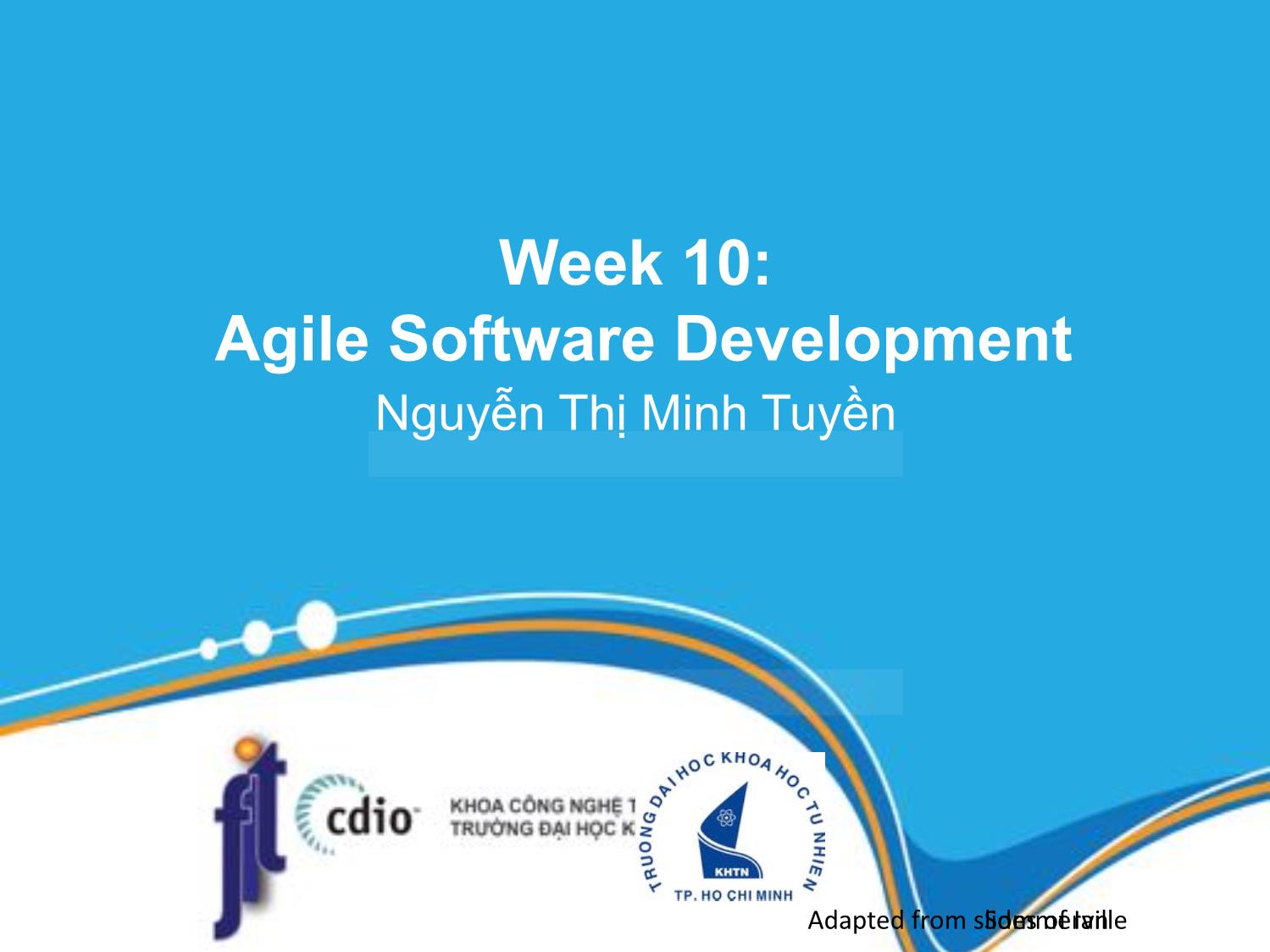
Trang 1
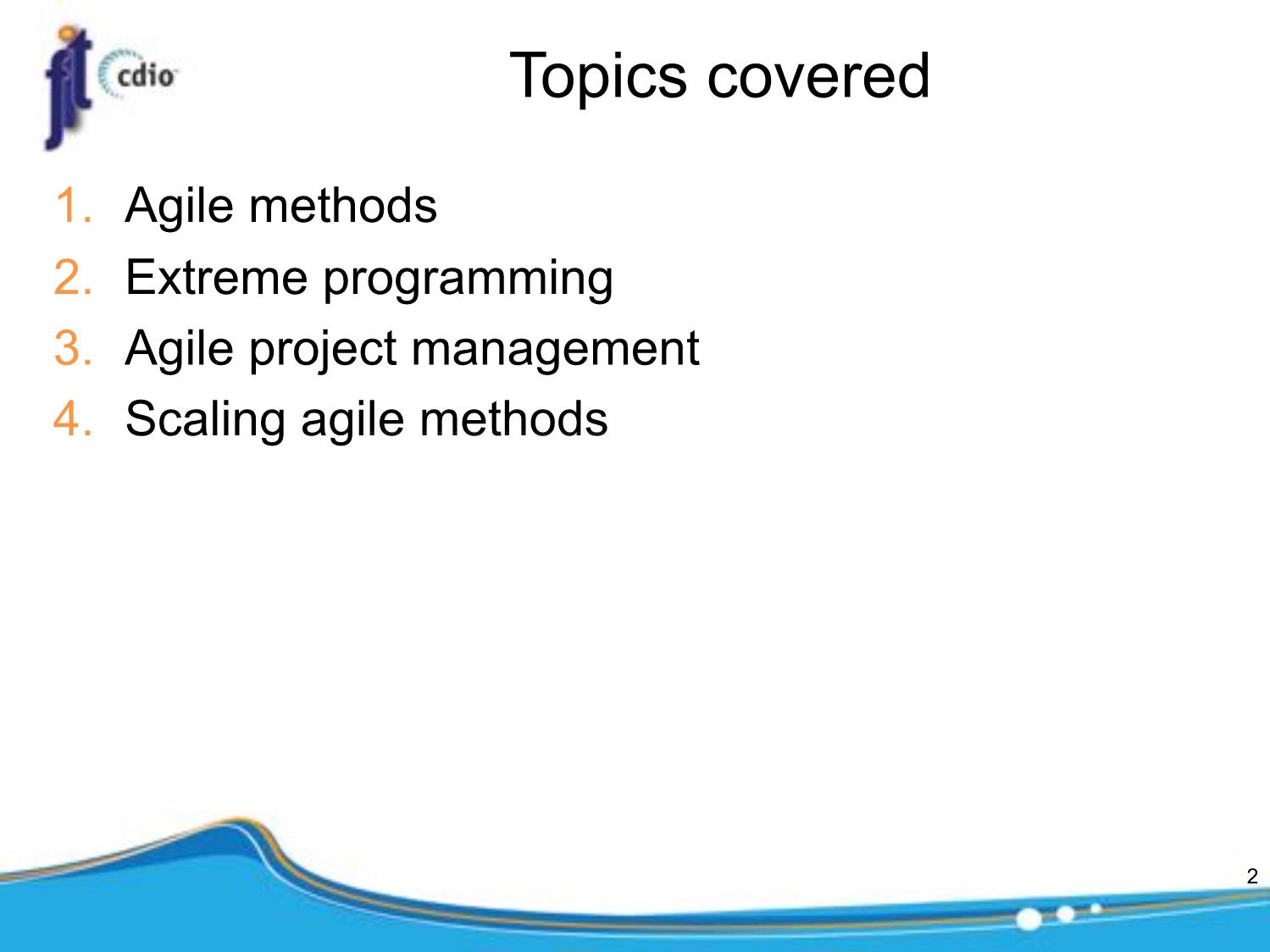
Trang 2
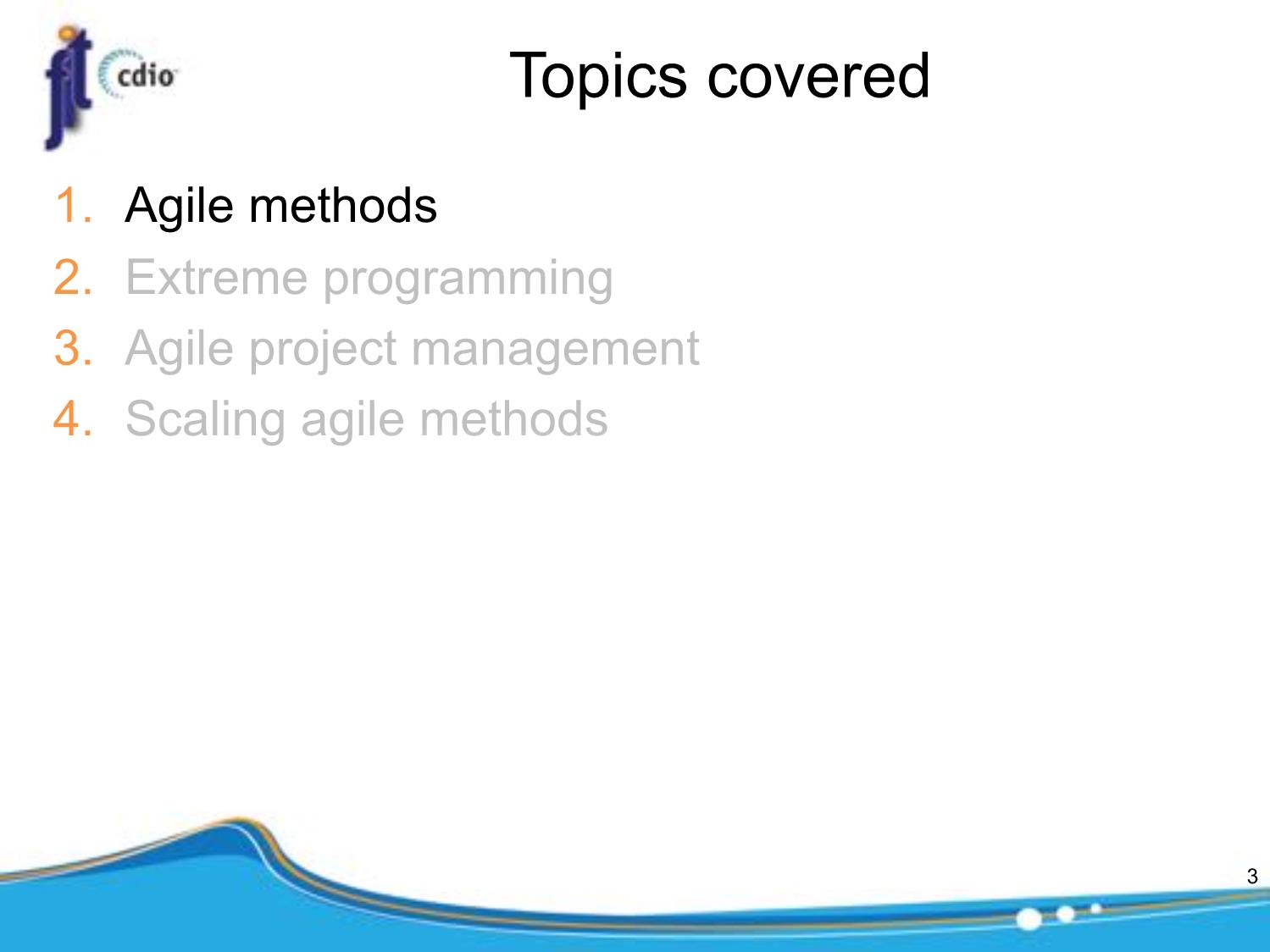
Trang 3

Trang 4
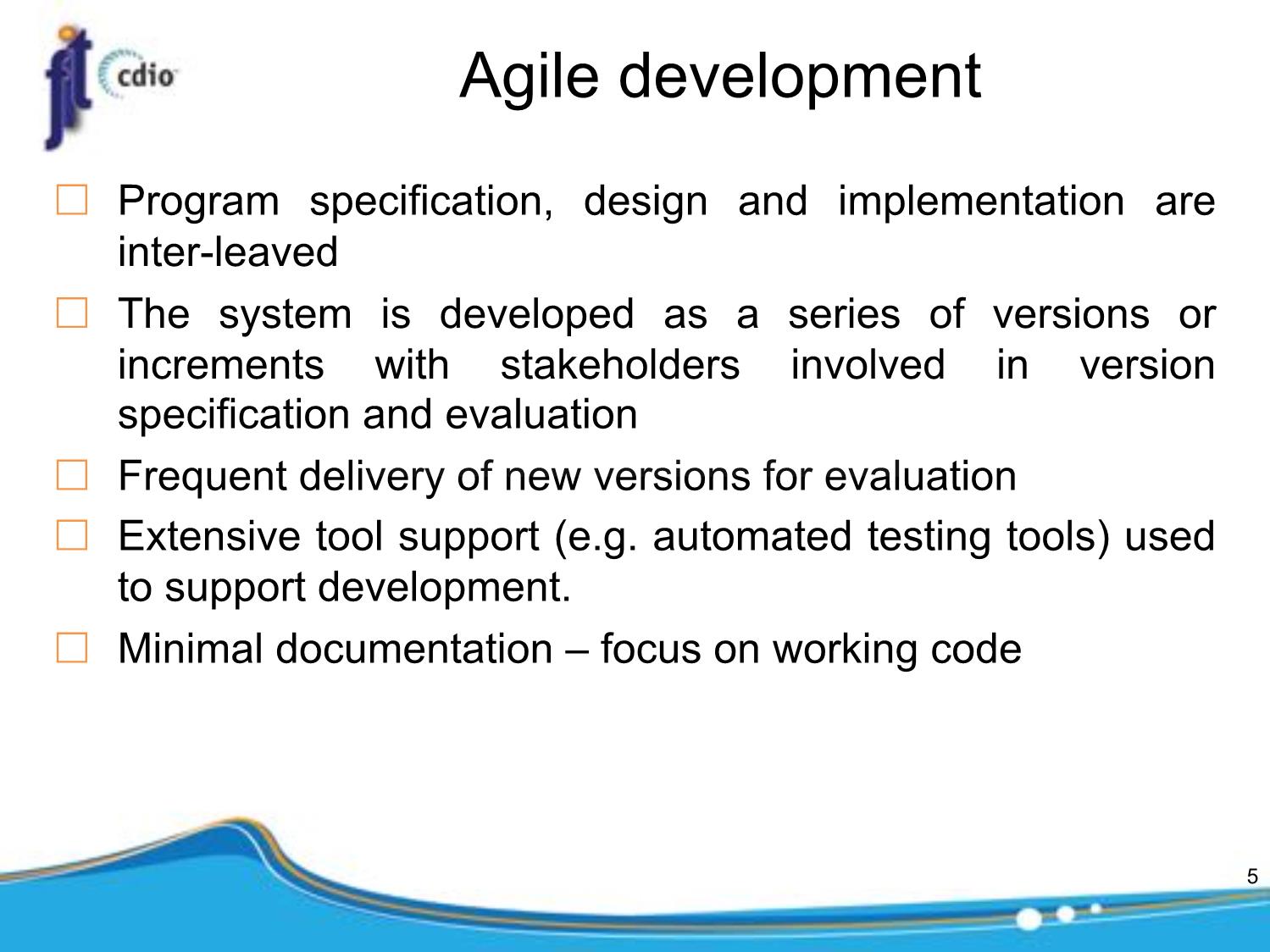
Trang 5
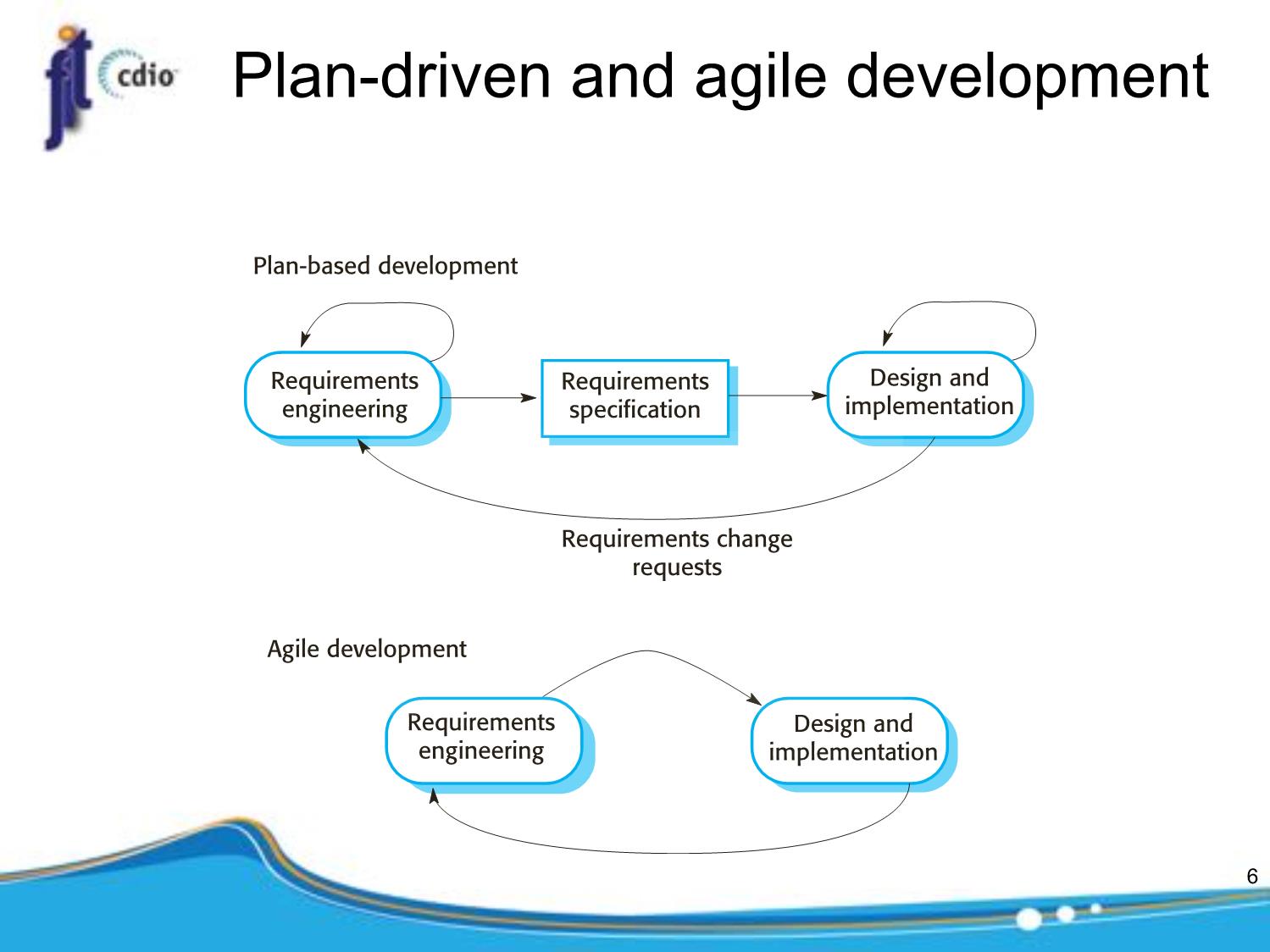
Trang 6
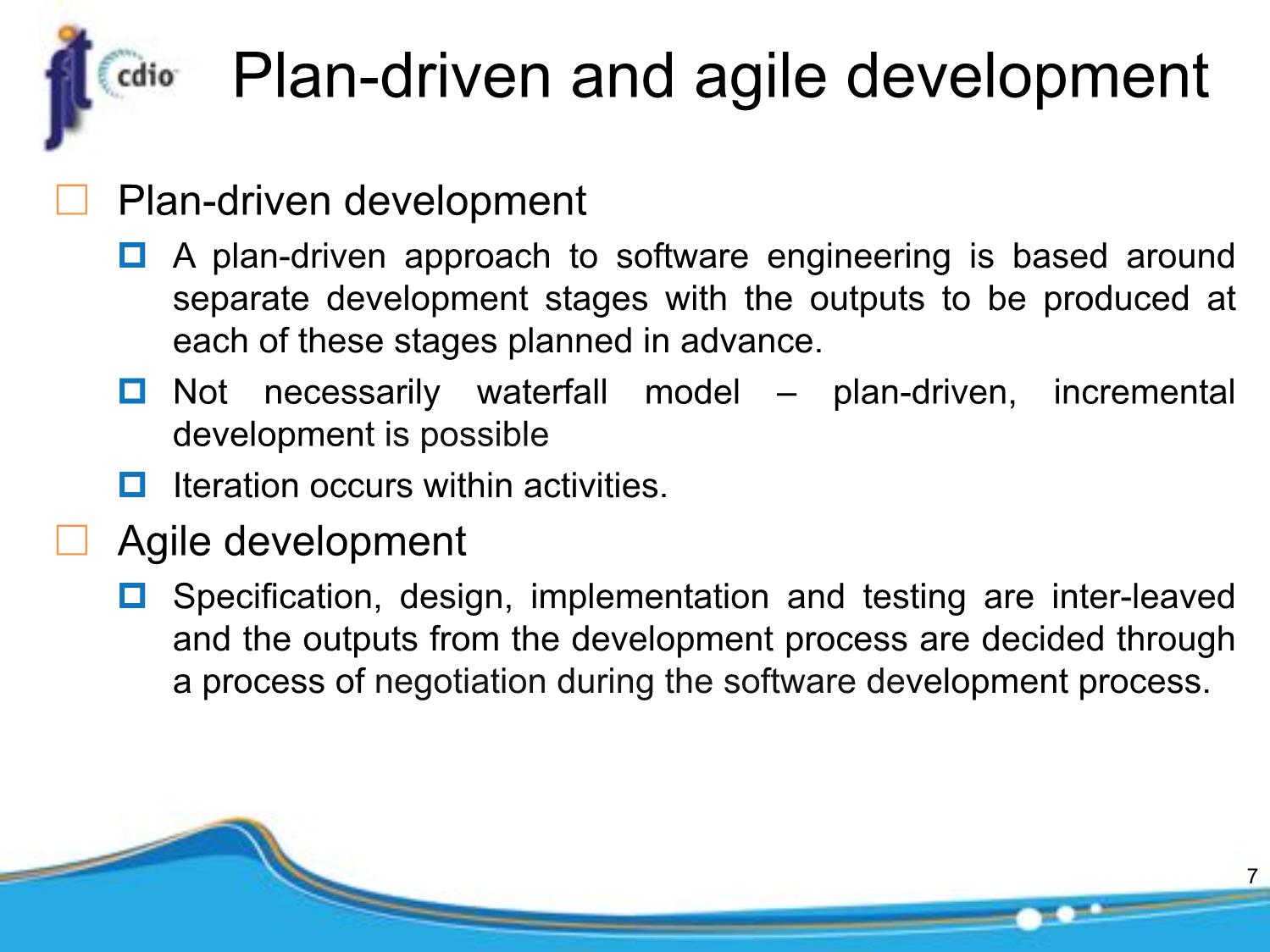
Trang 7
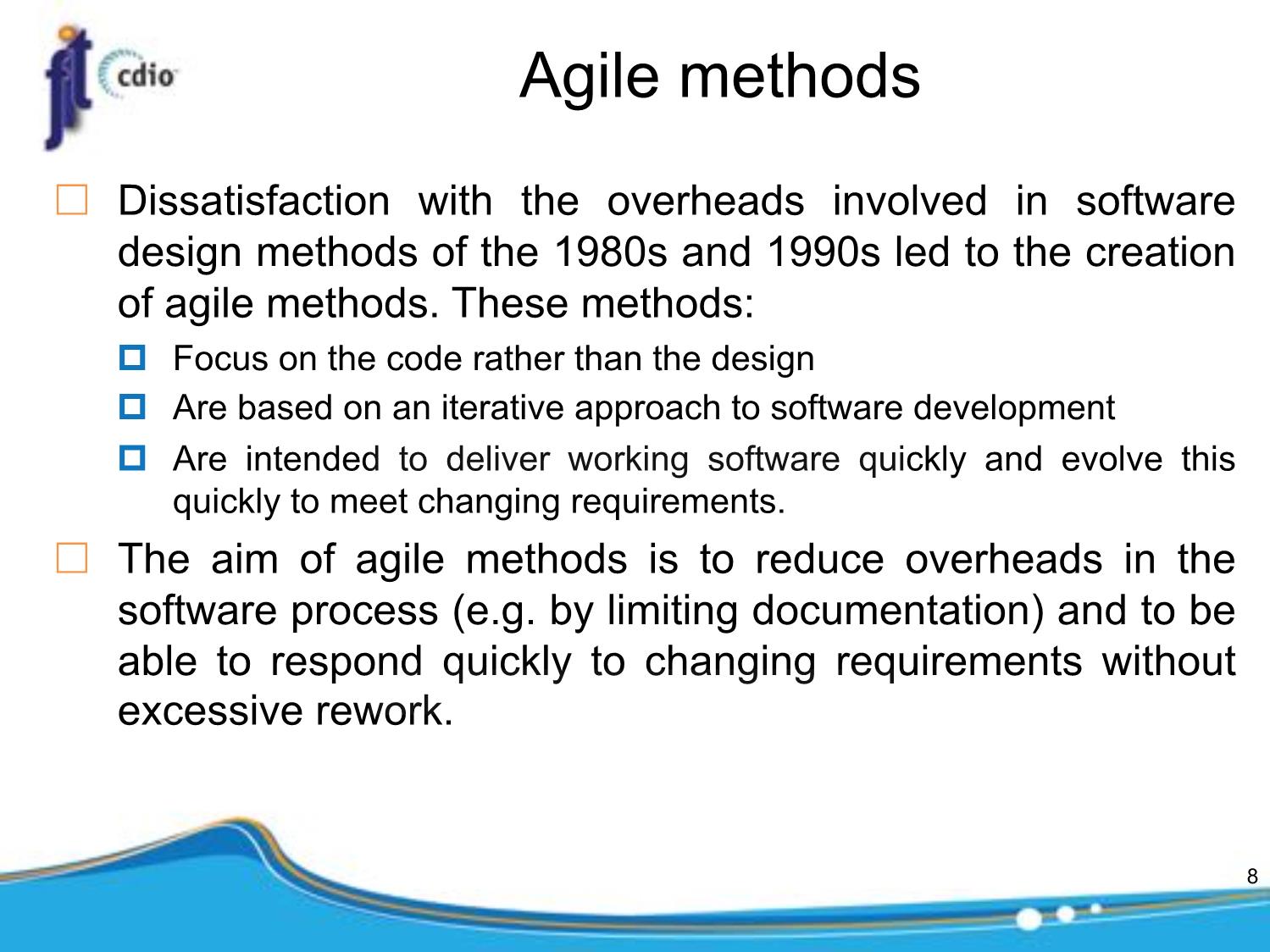
Trang 8
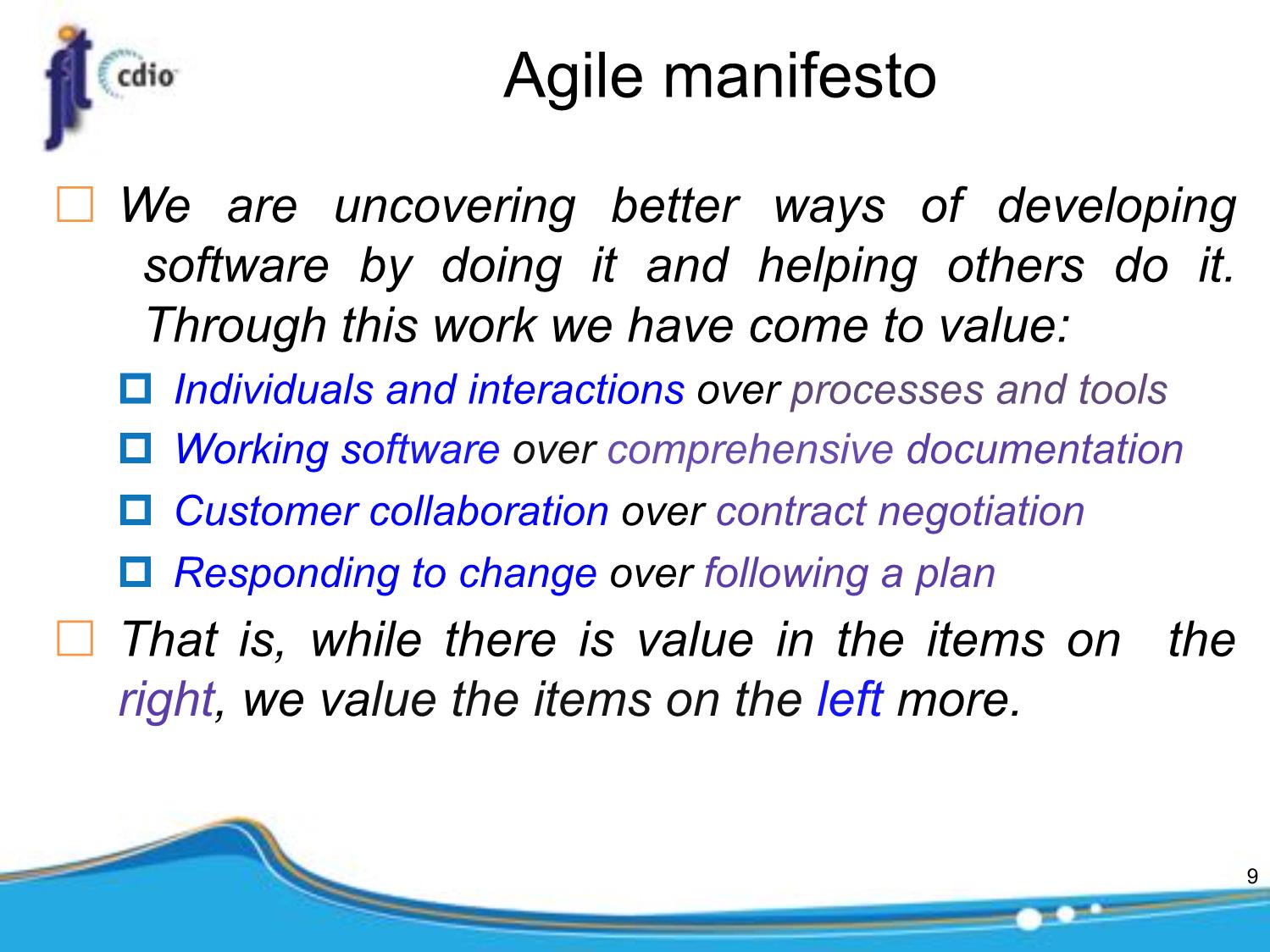
Trang 9
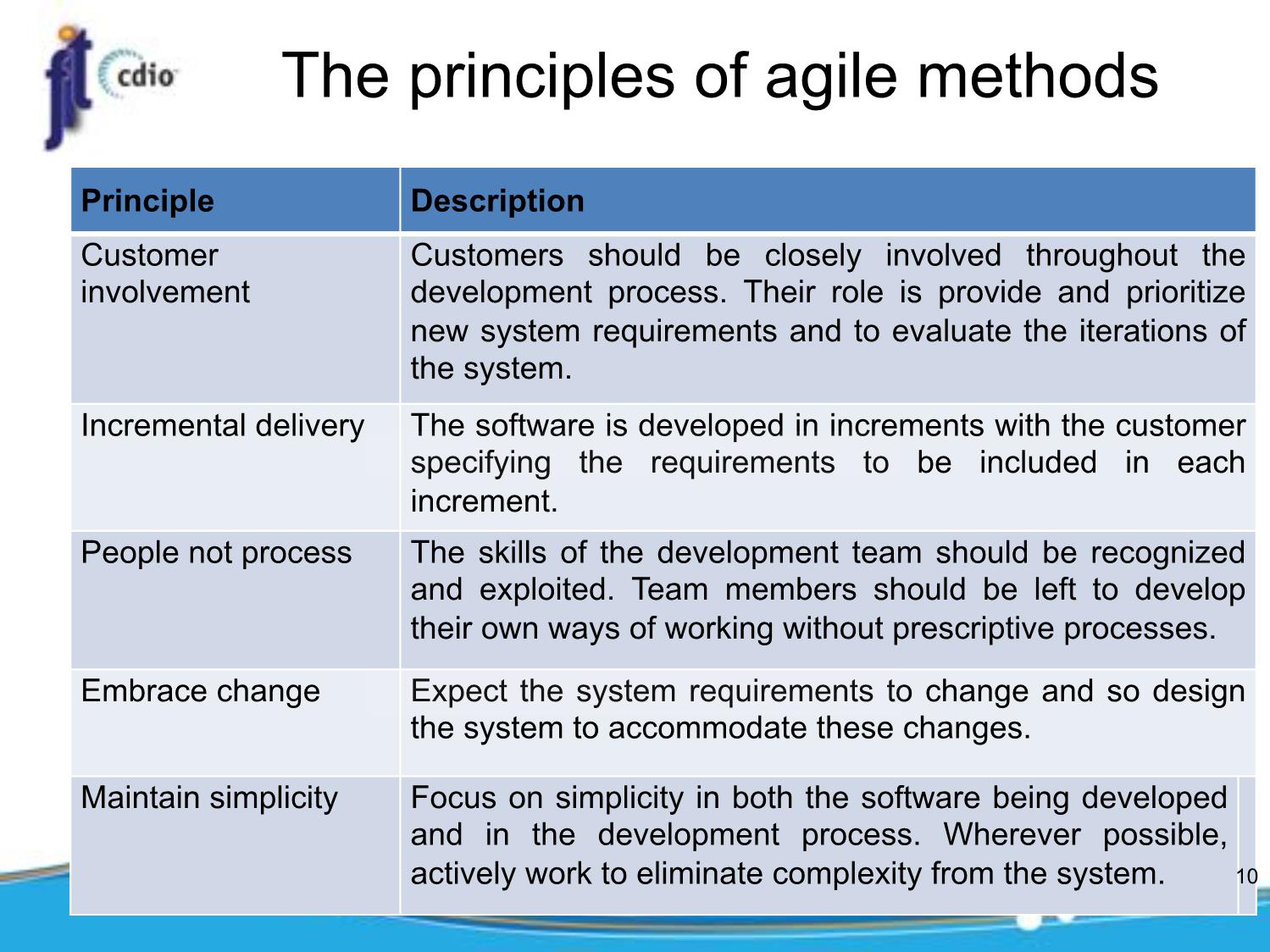
Trang 10
Tải về để xem bản đầy đủ
Bạn đang xem 10 trang mẫu của tài liệu "Bài giảng Introduction to Software Engineering - Week 10: Agile software development - Nguyễn Thị Minh Tuyền", để tải tài liệu gốc về máy hãy click vào nút Download ở trên
Tóm tắt nội dung tài liệu: Bài giảng Introduction to Software Engineering - Week 10: Agile software development - Nguyễn Thị Minh Tuyền

is followed and guides the team in the effective use of Scrum. He or she is responsible for interfacing with the rest of the ScrumMaster company and for ensuring that the Scrum team is not diverted by outside interference. The Scrum developers are adamant that the ScrumMaster should not be thought of as a project manager. Others, however, may not always find it easy to see the difference. Sprint A development iteration. Sprints are usually 2-4 weeks long. An estimate of how much product backlog effort that a team can cover in a single sprint. Understanding a team’s velocity helps Velocity them estimate what can be covered in a sprint and provides a basis for measuring improving performance. 38 Scrum process Assess Select Outline planning and architectural Project closure design Review Develop Sprint cycle 39 NGUYỄN Thị Minh Tuyền Scrum sprint cycle Scrum Review work Select Plan Review Sprint to be done items sprint sprint Potentially Product Sprint shippable backlog backlog software 40 Sprint cycle £ Fixed length, normally 2–4 weeks. They correspond to the development of a release of the system in XP. £ The starting point for planning is the product backlog, which is the list of work to be done on the project. £ The selection phase involves all of the project team who work with the customer to select the features and functionality to be developed during the sprint. 41 Sprint cycle £ Once these are agreed, the team organize themselves to develop the software. p During this stage the team is isolated from the customer and the organization, with all communications channelled through the so-called ‘Scrum master’. £ The role of the Scrum master is to protect the development team from external distractions. £ At the end of the sprint, the work done is reviewed and presented to stakeholders. The next sprint cycle then begins. 42 Teamwork in Scrum £ The ‘Scrum master’ is a facilitator who arranges daily meetings, tracks the backlog of work to be done, records decisions, measures progress against the backlog and communicates with customers and management outside of the team. £ The whole team attends short daily meetings where all team members share information, describe their progress since the last meeting, problems that have arisen and what is planned for the following day. p This means that everyone on the team knows what is going on and, if problems arise, can re-plan short-term work to cope with them. 43 Scrum benefits £ The product is broken down into a set of manageable and understandable chunks. £ Unstable requirements do not hold up progress. £ The whole team have visibility of everything and consequently team communication is improved. £ Customers see on-time delivery of increments and gain feedback on how the product works. £ Trust between customers and developers is established and a positive culture is created in which everyone expects the project to succeed. 44 Distributed Scrum The ScrumMaster should be located with the development team so that he or she is The product owner aware of everyday should visit the Videoconferencing problems. developers and try to between the product establish a good owner and the relationship with them. development team It is essential that they trust each other. Distributed Scrum Real-time communica- A common development tions between team environment for all teams members for informal communication, Continuous integration, particularly instant so that all team messaging and video members can be aware calls. of the state of the product at any time. 45 Topics covered 1. Agile methods 2. Extreme programming 3. Agile project management 4. Scaling agile methods 46 Scaling agile methods £ Agile methods have proved to be successful for small and medium sized projects that can be developed by a small co-located team. £ It is sometimes argued that the success of these methods comes because of improved communications which is possible when everyone is working together. £ Scaling up agile methods involves changing these to cope with larger, longer projects where there are multiple development teams, perhaps working in different locations. 47 Scaling out and scaling up £ ‘Scaling up’ is concerned with using agile methods for developing large software systems that cannot be developed by a small team. £ ‘Scaling out’ is concerned with how agile methods can be introduced across a large organization with many years of software development experience. £ When scaling agile methods it is important to maintain agile fundamentals p Flexible planning, frequent system releases, continuous integration, test-driven development and good team communications. 48 Practical problems with agile methods £ The informality of agile development is incompatible with the legal approach to contract definition that is commonly used in large companies. £ Agile methods are most appropriate for new software development rather than software maintenance. Yet the majority of software costs in large companies come from maintaining their existing software systems. £ Agile methods are designed for small co-located teams yet much software development now involves worldwide distributed teams. 49 Contractual issues £ Most software contracts for custom systems are based around a specification, which sets out what has to be implemented by the system developer for the system customer. £ However, this precludes interleaving specification and development as is the norm in agile development. £ A contract that pays for developer time rather than functionality is required. p However, this is seen as a high risk my many legal departments because what has to be delivered cannot be guaranteed. 50 Agile methods and software maintenance £ Most organizations spend more on maintaining existing software than they do on new software development. So, if agile methods are to be successful, they have to support maintenance as well as original development. £ Two key issues: p Are systems that are developed using an agile approach maintainable, given the emphasis in the development process of minimizing formal documentation? p Can agile methods be used effectively for evolving a system in response to customer change requests? £ Problems may arise if original development team cannot be maintained. 51 Agile maintenance £ Key problems are: p Lack of product documentation p Keeping customers involved in the development process p Maintaining the continuity of the development team £ Agile development relies on the development team knowing and understanding what has to be done. £ For long-lifetime systems, this is a real problem as the original developers will not always work on the system. 52 Agile and plan-driven methods £ Most projects include elements of plan-driven and agile processes. Deciding on the balance depends on: p Is it important to have a very detailed specification and design before moving to implementation? If so, you probably need to use a plan-driven approach. p Is an incremental delivery strategy, where you deliver the software to customers and get rapid feedback from them, realistic? If so, consider using agile methods. p How large is the system that is being developed? Agile methods are most effective when the system can be developed with a small co-located team who can communicate informally. This may not be possible for large systems that require larger development teams so a plan-driven approach may have to be used. 53 Agile principles and organizational practice Principle Practice Customer This depends on having a customer who is willing and able to involvement spend time with the development team and who can represent all system stakeholders. Often, customer representatives have other demands on their time and cannot play a full part in the software development. Where there are external stakeholders, such as regulators, it is difficult to represent their views to the agile team. Embrace change Prioritizing changes can be extremely difficult, especially in systems for which there are many stakeholders. Typically, each stakeholder gives different priorities to different changes. Incremental delivery Rapid iterations and short-term planning for development does not always fit in with the longer-term planning cycles of business planning and marketing. Marketing managers may need to know what product features several months in advance to prepare an effective marketing campaign. 54 Agile principles and organizational practice Principle Practice Maintain simplicity Under pressure from delivery schedules, team members may not have time to carry out desirable system simplifications. People not process Individual team members may not have suitable personalities for the intense involvement that is typical of agile methods, and therefore may not interact well with other team members. 55 Agile and plan-based factors System Team Organization Type Lifetime Technology Distribution Contracts Delivery Scale Regulation Competence Culture 56 System issues £ How large is the system being developed? p Agile methods are most effective a relatively small co-located team who can communicate informally. £ What type of system is being developed? p Systems that require a lot of analysis before implementation need a fairly detailed design to carry out this analysis. £ What is the expected system lifetime? p Long-lifetime systems require documentation to communicate the intentions of the system developers to the support team. £ Is the system subject to external regulation? p If a system is regulated you will probably be required to produce detailed documentation as part of the system safety case. 57 People and teams £ How good are the designers and programmers in the development team? p It is sometimes argued that agile methods require higher skill levels than plan-based approaches in which programmers simply translate a detailed design into code. £ How is the development team organized? p Design documents may be required if the team is dsitributed. £ What support technologies are available? p IDE support for visualisation and program analysis is essential if design documentation is not available. 58 Organizational issues £ Traditional engineering organizations have a culture of plan-based development, as this is the norm in engineering. £ Is it standard organizational practice to develop a detailed system specification? £ Will customer representatives be available to provide feedback of system increments? £ Can informal agile development fit into the organizational culture of detailed documentation? 59 Agile methods for large systems £ Large systems are usually collections of separate, communicating systems, where separate teams develop each system. p Frequently, these teams are working in different places, sometimes in different time zones. £ Large systems are ‘brownfield systems’, that is they include and interact with a number of existing systems. p Many of the system requirements are concerned with this interaction and so don’t really lend themselves to flexibility and incremental development. £ Where several systems are integrated to create a system, a significant fraction of the development is concerned with system configuration rather than original code development. 60 Large system development £ Large systems and their development processes are often constrained by external rules and regulations limiting the way that they can be developed. £ Large systems have a long procurement and development time. It is difficult to maintain coherent teams who know about the system over that period as, inevitably, people move on to other jobs and projects. £ Large systems usually have a diverse set of stakeholders. It is practically impossible to involve all of these different stakeholders in the development process. 61 Factors in large systems Brownfield System of development Diverse systems stakeholders Large software system Prolonged Regulatory procurement System constraints configuration 62 IBM’s agility at scale model Core agile development Disciplined agile delivery Value-driven life-cycle Risk+value driven lifecycle Self-organizing teams Self-organizing with appropriate Focus on construction governance framework Full delivery life-cycle Agility at scale Agility at scale Disciplined Disciplined agile delivery where agile delivery scaling factors apply: Large team size Geographic distribution Core agile Regulatory compliance development Domain complexity Organization distribution Technical complexity Organizational complexity Enterprise discipline 63 Scaling up to large systems £ A completely incremental approach to requirements engineering is impossible. £ There cannot be a single product owner or customer representative. £ For large systems development, it is not possible to focus only on the code of the system. £ Cross-team communication mechanisms have to be designed and used. £ Continuous integration is practically impossible. However, it is essential to maintain frequent system builds and regular releases of the system. 64 Multi-team Scrum £ Role replication p Each team has a Product Owner for their work component and ScrumMaster. £ Product architects p Each team chooses a product architect and these architects collaborate to design and evolve the overall system architecture. £ Release alignment p The dates of product releases from each team are aligned so that a demonstrable and complete system is produced. £ Scrum of Scrums p There is a daily Scrum of Scrums where representatives from each team meet to discuss progressand plan work to be done. 65 Agile methods across organizations £ Project managers who do not have experience of agile methods may be reluctant to accept the risk of a new approach. £ Large organizations often have quality procedures and standards that all projects are expected to follow and, because of their bureaucratic nature, these are likely to be incompatible with agile methods. £ Agile methods seem to work best when team members have a relatively high skill level. However, within large organizations, there are likely to be a wide range of skills and abilities. £ There may be cultural resistance to agile methods, especially in those organizations that have a long history of using conventional systems engineering processes. 66 Questions? 67
File đính kèm:
 bai_giang_introduction_to_software_engineering_week_10_agile.pdf
bai_giang_introduction_to_software_engineering_week_10_agile.pdf

